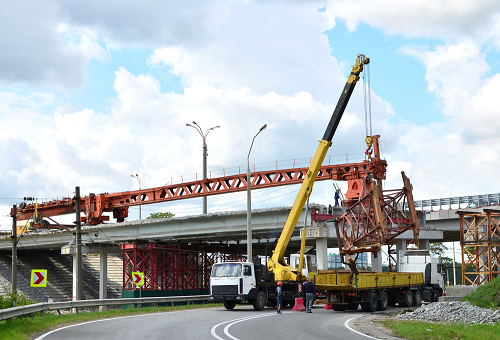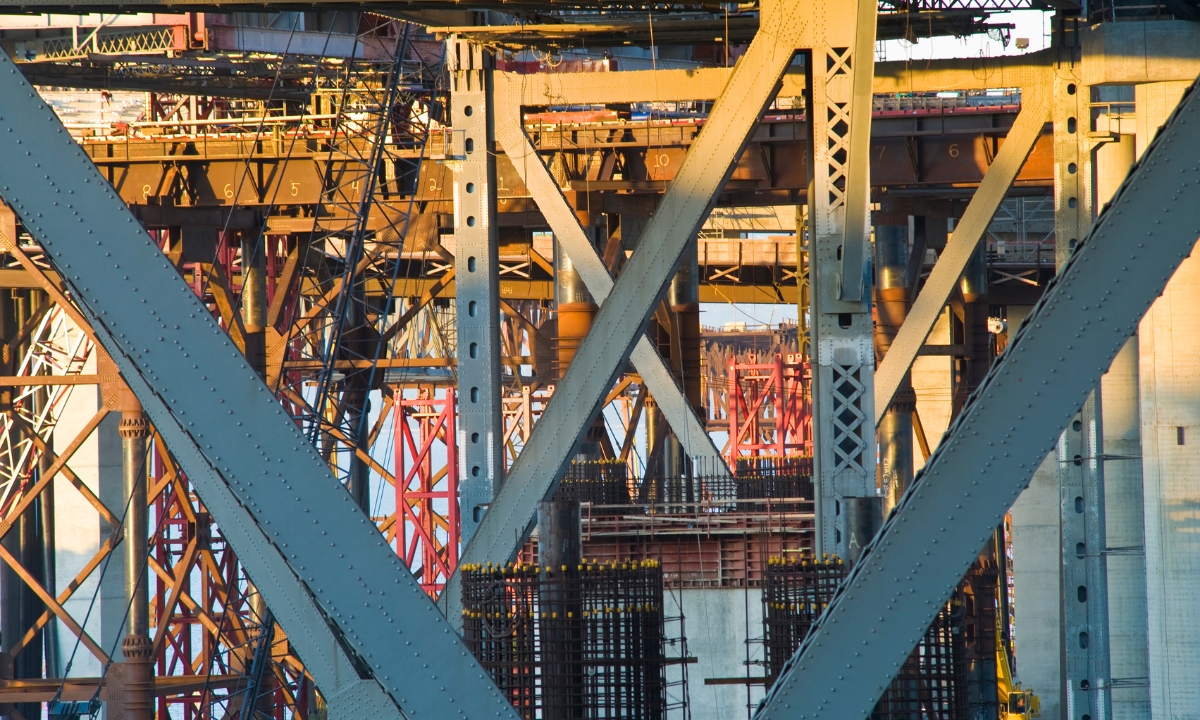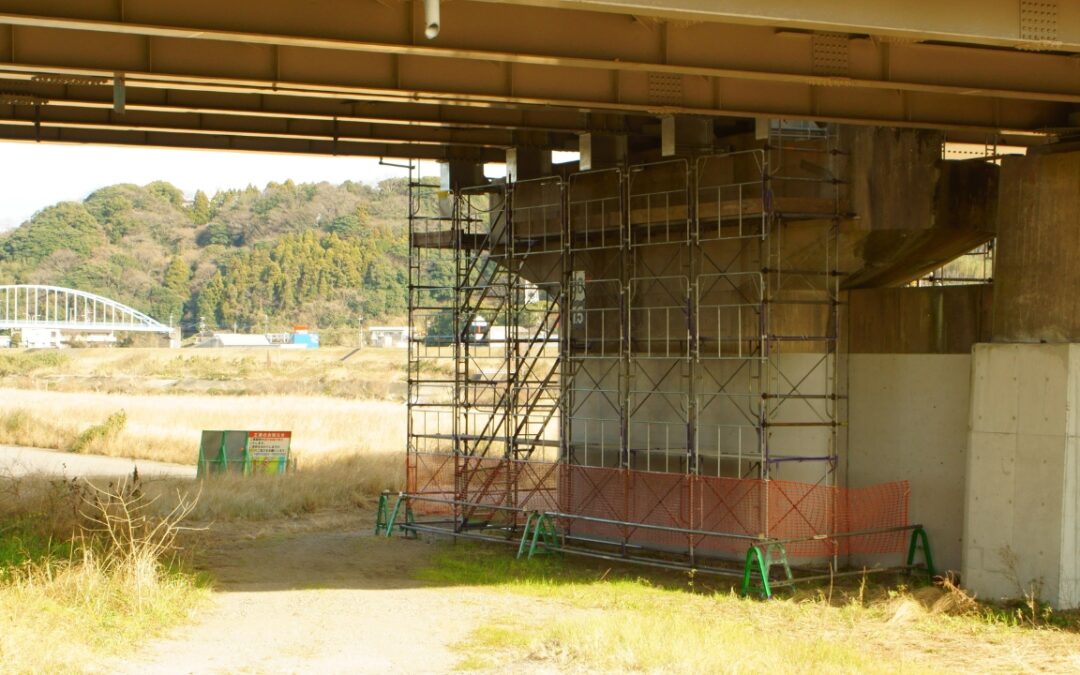[This article was first published June 30, 2020, and has been updated and expanded.]
The industry of bridge riggers, bridge inspection, maintenance and repair covers all 50 states, Guam and Puerto Rico, which, according to the Federal Highway Administration, have over 616,000 bridges.
Unfortunately, an excessively large number of these bridges are in need of repair.

America’s Bridges: A Mix of Progress and Peril
The recent collapse of a bridge in Baltimore, while tragic, was an anomaly caused by a specific accident rather than a widespread infrastructure issue. However, it serves as a stark reminder of the need for continued vigilance when it comes to our nation’s bridges. Here’s a closer look:
- A National Snapshot: The U.S. Department of Transportation keeps tabs on over 600,000 bridges. While 6.8% are classified as “poor,” that translates to a significant number – over 40,000 bridges in need of attention.
- State of Disrepair: Some states face a more critical situation. West Virginia, Iowa, South Dakota, and Rhode Island have a worryingly high percentage (15-20%) of bridges in poor condition.
- Brighter Spots: There are success stories too! Georgia boasts the highest percentage (75%) of bridges rated “good,” while Arizona, Nevada, and Texas keep their bridge woes minimal, with only 1% classified as poor.
- Positive Trends: There’s good news overall. The national trend shows a significant improvement over the past two decades. The percentage of bridges in poor condition has been cut in half, dropping from 15.2% in 2000 to the current 6.8%.
- Looking Ahead: The recently passed bipartisan infrastructure law allocates $40 billion for bridge repairs and rebuilding. While this is a positive step, it will take time for these funds to translate into tangible improvements.
The takeaway? America’s bridges tell a story of progress mixed with ongoing challenges. Continued investment and attention are crucial to ensure safe passage for all.
The Growing Need for Bridge Repair
Decades of warnings from bridge experts and U.S. presidents about the nation’s deteriorating bridges and neglected maintenance have seemingly fallen on deaf ears. The collision of a cargo ship with Baltimore’s Francis Scott Key Bridge in March 2024 has once again thrust the issue into the spotlight. While the specific circumstances of this disaster are extraordinary, the underlying problem of inadequate bridge upkeep remains a persistent threat.
According to an article at USA Today,
“Rick Geddes, an infrastructure policy expert and director of Cornell University’s infrastructure policy program, said the bridge collapse highlights several crucial issues.
‘This disaster reveals how exposed America’s critical infrastructure is to sudden and devastating accidents as well as intentional destruction,’ Geddes said. ‘Improved resilience should be on everyone’s mind as aging infrastructure is rebuilt. Enhanced protection against ship-bridge collisions will certainly become more salient.’”
The good news is that the recent passage of the Bipartisan Infrastructure Law established what is known as the Bridge Investment Program, which will invest $40 billion over five years. The purpose of the program, according to a recent press release from the U.S. Department of Transportation, is,
“[T]o ensure the nation’s bridges remain safe and operational, meet current and future traveler needs, support local economies, strengthen supply chains to keep costs down for consumers, and create good-paying jobs across the country. More than 10,200 bridges are being rebuilt, repaired, or modernized…”
The press release noted that, in Fiscal Year 2022, the Bridge Investment Program invested $2.4 billion in the planning and construction of 37 bridges in 29 states across the country. In July 2024, U.S. Transportation Secretary Pete Buttigieg announced more than $5 billion in Large Bridge Project awards through the Federal Highway Administration’s (FHWA) competitive Bridge Investment Program.
These grants will fund the reconstruction, repair, and restoration of nationally significant bridges in 16 states. The 13 Large Bridge Project Grants awarded in this round of funding will provide for the improvement and repair of several bridges, as well as the replacement of over two dozen bridges.
Working Hard to Keep Up With Bridge Repair
We hear numbers thrown out occasionally on the state of bridges in need of repair, but these are often abstract and lack any real context. Here are some statistics that help provide a bigger picture of the somewhat precarious state of our nation’s bridges:
- More than 46,000 bridges are rated in poor condition and classified as “structurally deficient.”
- A total of 81,000 bridges should be replaced.
- More than one third (37 percent) of U.S. bridges—nearly 231,000 spans—need repair work.
- At the current rate, it will take 50 years to fix all of the nation’s structurally deficient bridges.
- There are 178 million daily crossings on over 46,100 structurally deficient U.S. bridges in poor condition.
- Structurally deficient bridges are nearly 69 years old, on average, compared to 44 years old for non-deficient bridges.
- If placed end-to-end, the length of bridges in need of repair would stretch over 6,300 miles.
According to a report from the American Road & Transportation Builders Association (ARTBA),
“Nationwide, the area of structurally deficient is 21.4 million square meters, a total of 5.4 percent of the area of all bridges. That is enough to cover over 4,000 football fields. Half of the bridge deck area in the country— 50 percent – is rated in fair condition, with the remaining 44 percent considered to be in good condition.”
A snapshot of one state, California, provides a revealing trend. In the nation’s largest state, the top ten most traveled structurally deficient bridges are found in just three counties, all in southern California.
The counties of Los Angeles, Orange and Contra Costa have bridges supporting a total of 2,543,000 daily crossings, with the oldest bridge – on Interstate 5 over Marietta Street in Los Angeles County – dating from 1948. In addition, California holds the honor of having 14 of the top 20 “Most Traveled U.S. Structurally Deficient Bridges” in 2019.
Top Ten States – Percentage of Structurally Deficient Bridges
When listed by the percentage of structurally deficient bridges in each state based on the number of bridges in those states, the top ten states are as follows:
(Courtesy of artbabridgereport.org)
There are a total of 46,154 bridges that are classified as structurally deficient and considered to be in poor condition. The combined length of just these bridges is over 1,115 miles and could span the distance between Las Vegas and Seattle. According to data gathered by ARTBA, motorists cross these compromised bridges almost 180 million times every day.
Types of Repair Work Needed By Percentage of Structurally Deficient Bridges
35% – Bridge replacement
23% – Rehabilitation
20% – Other structural work
17% – Widening and other rehabilitation
5% – Deck rehabilitation or replacement
The state of Texas has the largest number of bridges of any state in the country with 54,432. However, it ties with Nevada for having the lowest percentage of structurally deficient bridges overall in the state with just 1.3% of bridges in need of repairs.
And which state is number one?
That would be Rhode Island. With only 779 bridges in the state, 174 (or 22.3%) are considered structurally deficient and in need of repairs and rehabilitation.
According to a recent analysis by the Associated Press:
- There are approximately 42,400 bridges in the United States in poor condition, carrying about 167 million vehicles daily, based on federal government data.
- Four-fifths of these deteriorating bridges have issues with their substructures (the legs that support them) or their superstructures (the arms that carry their load).
- More than 15,800 of these bridges were also classified as being in poor condition a decade ago, as reported by AP’s analysis.
- Iowa has the highest number of poor bridges, followed by Pennsylvania, Illinois, and Missouri.

The Good News: Bridge Repair and Use of Bridge Riggers is Escalating in the U.S.
After two and a half years, significant progress has been made, with thousands of infrastructure-related projects now funded. This is backed by data tracking the allocation of administered funds for completed jobs and ongoing projects.
Key takeaways from this data include:
- The U.S. is investing $478.4 billion in public infrastructure and clean energy projects.
- So far, $301.1 billion has been allocated for transportation investments in roads, bridges, public transit, ports, and airports.
- In 2023 alone, the U.S. Department of Transportation (USDOT) awarded nearly $1.2 billion to nine major transportation projects.
As one organization noted on their website,
“While progress has certainly been made, there is still much work left to be done. The U.S. is still in need of an estimated $319 billion of needed bridge repairs nationwide, according to the American Road & Transportation Builders Association.
‘The bottom line is that America’s bridges need a lot of work,’ Transportation Secretary Pete Buttigieg told the AP after visiting a closed Rhode Island bridge. He added: ‘The sooner we can address those significant bridges, the less likely they will be abruptly taken out of service, or worse, experience the risk of a collapse.’”
Need Bridge Rigger Inspection or Repair Equipment Rental?
If your business involves constructing new bridges, repairing existing bridges or simply inspecting them you need a variety of equipment for your work. However, most firms do not have the resources to buy and maintain a fleet of vehicles and equipment to handle every bridge project they acquire. Not to mention the means to store them safely.
This is why renting bridge boom lifts and other bridge equipment is the best way to get the right equipment when you need it.
Depending on the volume of work your company does, you may have times where only a few under bridge inspection units or bridge boom lifts are needed. Other times, however, might see your company engaged on several job sites simultaneously. Over time, it becomes far more cost-effective to simply rent the right equipment when you need it and only when you need it.
Another advantage of renting your bridge boom lifts and other related equipment is having access to newer and more advanced models. Purchasing your own lift can be a major capital investment and you’d likely feel pressed to rely on that unit long past the time it should be replaced. With most rentals, however, you are far more likely to have use of much newer models and have several to choose from, as well.
Having a professional firm you can rely on to guide you through the process of hiring the right under bridge inspection vehicle and bridge inspection platform equipment for your project is key to making the proper selection.
We take a great deal of pride in being the only company in California that offers total under bridge access. By offering high quality customer service, we have managed to build long-lasting relationships with our esteemed customers. And we intend to keep it that way.
Contact us today to discuss your requirements.


Recent Comments